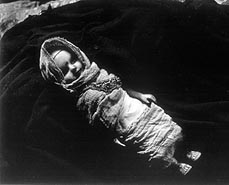 I first visited the South Park Street Cemetery thirty years ago, soon after I joined St Xavier's College in Calcutta. I had wandered in just out of curiosity. This lay on the way between the college and the bus stop. The cemetery had been opened in 1767 and was in use for the next century or so.
I first visited the South Park Street Cemetery thirty years ago, soon after I joined St Xavier's College in Calcutta. I had wandered in just out of curiosity. This lay on the way between the college and the bus stop. The cemetery had been opened in 1767 and was in use for the next century or so.I was immediately struck by the large number of graves of infants, children and young people, all British of course. The marble tablets on the tombs and monuments of different sizes and shapes, bore the grieving lamentations of their family members. I remember coming across the sequential testimony to a whole family being wiped out: young father, younger mother and a couple of infant children, one following the other. I was moved.
It was many years later that I remembered this cemetery and its sad legacy. But in between I was exposed to another aspect of the city, its labouring poor, and the bastis, where they resided. I had come to learn that this section had, historically, always had to struggle for survival in the city, for a place to live.
… Which persists even today, with enormous disparities in living conditions, rooted in people’s insensitivity to the plight of the less privileged sections. We still have class and ethnic prejudice writ large on the city - akin to the “geological fault in the human psyche”, spoken of by the American thinker Lewis Mumford.
… A visit to the Park Street Cemetery should be a part of the self-education of all Calcuttans. The city is like one vast library, of knowledge, values and sensibilities, which exists only to enable even further advances at any point of time. We should learn to read our cities. So that we can then also write, through our life and work, the story of the city of tomorrow
Read the full article here.
Photo: Achinto


No comments:
Post a Comment